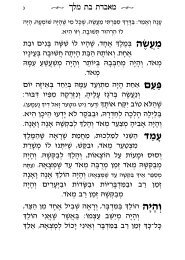4 - Jewish E-Books
4 - Jewish E-Books
4 - Jewish E-Books
Create successful ePaper yourself
Turn your PDF publications into a flip-book with our unique Google optimized e-Paper software.
slowly, until a small push on the door will open it.<br />
No electric circuit is opened or closed. A few seconds<br />
after the hand is removed the current is decreased,<br />
once again reducing the pull of the magnet and locking<br />
the door.<br />
Ringing a bell: Sometimes a locked door is opened<br />
from the inside by a guard who must be alerted by<br />
ringing a bell or talking through an intercom. The<br />
button normally used to ring a bell will be replaced<br />
by a change-sensor. Putting a hand close to the<br />
sensor will cause the current to gradually increase in<br />
a buzzer or LED display, alerting the guard. In this<br />
technique, no electric circuit is opened or closed.<br />
When the hand is removed, the current gradually decreases<br />
and the buzz or the LED light at the guard’s<br />
station returns to its initial very weak state.<br />
keeps the door pressed tight to the doorpost,<br />
exerting a force of hundreds of kilograms. The<br />
button that is normally used to leave the installation<br />
is replaced by a change-sensor. When a hand<br />
comes close to the control box, the current passing<br />
through the electromagnet will be gradually reduced<br />
so that a light push on the door will open it.<br />
In this way, there is no electric circuit that is created<br />
or broken (and the pull of the magnet continues all<br />
the time). A few seconds after the hand is removed<br />
from the control box, the current is increased and<br />
the magnet returns to full strength.<br />
Electronic lock: The electronic locks have a built-<br />
<br />
the door remains locked. Pressing a switch closes a<br />
circuit and sends a current through the magnet, releasing<br />
the tongue of the lock. In this case, the usual<br />
button will be replaced by a change-sensor. Putting<br />
the hand near the control box or touching it causes<br />
the electric current in the electromagnet to increase<br />
Hospitals<br />
Aside from the security sphere, Machon Zomet’s<br />
<br />
Jerusalem’s Shaarei Zedek Medical Center near Bayit<br />
<br />
Marans, Rozen, and their team of frum engineers.<br />
One of the more interesting devices sold by the<br />
institute is the “Shab-et,” a pen used by many Israeli<br />
doctors. While writing is a biblical prohibition,<br />
temporary writing that fades after several days<br />
is only banned rabbinically. By making pens whose<br />
ink gradually disappears over the course of several<br />
days, Zomet has allowed doctors to keep records on<br />
Shabbos that can be transcribed or photocopied after<br />
Havdalah.<br />
Explains Zomet: “The Shab-et is in regular use in<br />
many hospitals, by security forces, and even in the<br />
<br />
if necessary). The use of a Shabbos pen is permitted<br />
only if the action is so essential that it takes precedence<br />
over the rabbinical prohibition of writing using<br />
temporary ink.”<br />
Another innovation introduced by Marans,<br />
Rozen, and team is the food cart grama plug. It is<br />
generally accepted that it is very important for patients<br />
to be served hot food. It is true that not all<br />
patients in a hospital are considered to be in mortal









